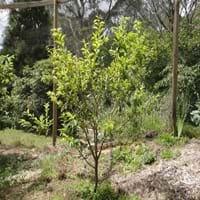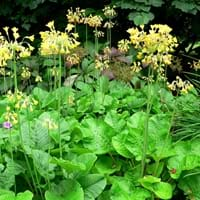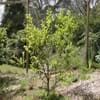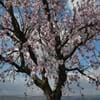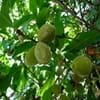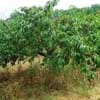Life Span
Biennial
Perennial
Origin
Hybrid origin
Eastern Europe, Southern Europe, Russia/Siberia, Southern Asia, Western Asia
Types
Flavorosa, Amigo, Eagle Egg
Not available
Number of Varieties
Not Available
Habitat
Wet lands
Roadsides, sand dunes, Waste areas
USDA Hardiness Zone
6-9
6-9
Sunset Zone
2a, 2b, 3a, 3b, 4, 5, 6, 7, 8, 9, 10, 11, 12, 14, 15, 16, 17, 18, 19, 20
1a, 1b, 2a, 2b, 3a, 3b, 4, 5, 6, 7, 8, 9, 14, 15, 16
Habit
Upright/Erect
Oval or Rounded
Flower Color
Not Available
Pink, Hot Pink, Rose
Flower Color Modifier
Bicolor
Bicolor
Fruit Color
Green, Orange Red, Red, Yellow green
Yellow, Yellow green, Pink, Dark Red
Leaf Color in Spring
Several shades of Green
Green
Leaf Color in Summer
Not Available
Green
Leaf Color in Fall
Not Available
Green, Light Yellow, Brown
Leaf Color in Winter
Light Green
Light Green
Leaf Shape
Palmately Lobed
Oblong
Plant Season
Winter
Summer
Sunlight
Full Sun
Full Sun, Partial Sun
Growth Rate
Medium
Medium
Type of Soil
Clay, Loam, Sand
Loam, Sand
The pH of Soil
Acidic, Neutral, Alkaline
Acidic, Neutral, Alkaline
Soil Drainage
Well drained
Well drained
Bloom Time
Spring
Early Summer, Summer, Late Summer
Tolerances
Drought
Drought
Where to Plant?
Ground
Container, Ground, Pot
How to Plant?
Transplanting
Divison, Seedlings, Stem Planting
Plant Maintenance
Medium
Low
Watering Requirements
Average Water Needs, Medium, Requires watering in the growing season, Water daily during growing season, Water Deeply
Average Water Needs, Do Not over Water, Never Over-water, Requires regular watering, Water more in summer
In Summer
Lots of watering
Lots of watering
In Spring
Moderate
Moderate
In Winter
Average Water
Average Water
Soil pH
Acidic, Neutral, Alkaline
Acidic, Neutral
Soil Type
Clay, Loam, Sand
Loam, Sand
Soil Drainage Capacity
Well drained
Well drained
Sun Exposure
Full Sun, Partial Sun
Full Sun, Partial Sun, Partial shade
Pruning
Remove damaged leaves, Remove dead branches, Remove dead leaves
Remove damaged leaves, Remove dead branches, Remove dead leaves
Fertilizers
All-Purpose Liquid Fertilizer, Apply 10-10-10 amount
All-Purpose Liquid Fertilizer, fertilize in growing season
Pests and Diseases
Red blotch
Slugs, Snails
Plant Tolerance
Drought
Variety of soil types
Flower Petal Number
Not Available
Single
Foliage Texture
Not Available
Medium
Foliage Sheen
Not Available
Matte
Attracts
Bees, Butterflies
Not Available
Allergy
Itchiness, Rash, Swelling
Abdominal pain, Constipation, Diarrhea, Skin irritation
Aesthetic Uses
Not Used For Aesthetic Purpose
Beautification, Borders, Landscape Designing, Showy Purposes
Beauty Benefits
Not Available
Good for skin, Making cosmetics, Stops hair loss
Edible Uses
Insignificant
Yes
Environmental Uses
Air purification
Air purification, Food for insects, Versatility
Medicinal Uses
Immunity
Eczema
Part of Plant Used
Fruits
Root
Other Uses
Jam, Jelly, Used As Food, Used in salads
Decoration Purposes, Medicinal oil, Showy Purposes, Used as Ornamental plant, Used for its medicinal properties
Used As Indoor Plant
No
Yes
Used As Outdoor Plant
Yes
Yes
Garden Design
Fruit / Fruit Tree
Edging, Feature Plant, Groundcover, Mixed Border
Botanical Name
PRUNUS 'Spring Satin'
MALUS domestica 'Pink Pearl'
Common Name
Plumcot, Spring Satin Plumcot
Apple, Eating Apple, Pink Pearl Apple
In Hindi
Plumcot
Tibetan cowslip
In German
Plumcot
Tibet-Primel
In French
plumcot
Kauslip tibétain
In Spanish
plumcot
Primula florindae
In Greek
Plumcot
Primula florindae
In Portuguese
plumcot
cowslip tibetana
In Polish
Plumcot
tybetański cowslip
In Latin
Plumcot
Primula florindae
Phylum
Vascular plant
Magnoliophyta
Class
Magnoliopsida
Magnoliopsida
Family
Rosaceae
Onagraceae
Clade
Angiosperms, Eudicots, Rosids
Angiosperms, Eudicots, Rosids
Tribe
Not Available
Onagreae
Subfamily
Not Available
Onagroideae
Importance of Plumcot and Tibetan cowslip
Want to have the most appropriate plant for your garden? You might want to know the importance of Plumcot and Tibetan cowslip. Basically, these two plants vary in many aspects. Compare Plumcot and Tibetan cowslip as they differ in many characteristics such as their life, care, benefits, facts, etc. Every gardener must at least have the slightest clue about the plants he wants to plant in his garden. Compare their benefits, which differ in many ways like facts and uses. The medicinal use of Plumcot is Immunity whereas of Tibetan cowslip is Eczema. Plumcot has beauty benefits as follows: Not Available while Tibetan cowslip has beauty benefits as follows: Not Available.
Compare Facts of Plumcot vs Tibetan cowslip
How to choose the best garden plant for your garden depending upon its facts? Here garden plant comparison will help you to solve this query. Compare the facts of Plumcot vs Tibetan cowslip and know which one to choose. As garden plants have benefits and other uses, allergy is also a major drawback of plants for some people. Allergic reactions of Plumcot are Itchiness, Rash and Swelling whereas of Tibetan cowslip have Abdominal pain, Constipation, Diarrhea and Skin irritation respectively. Having a fruit bearing plant in your garden can be a plus point of your garden. Plumcot has showy fruits and Tibetan cowslip has showy fruits. Also Plumcot is not flowering and Tibetan cowslip is not flowering . You can compare Plumcot and Tibetan cowslip facts and facts of other plants too.
